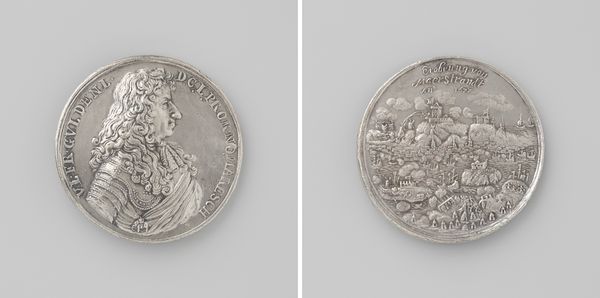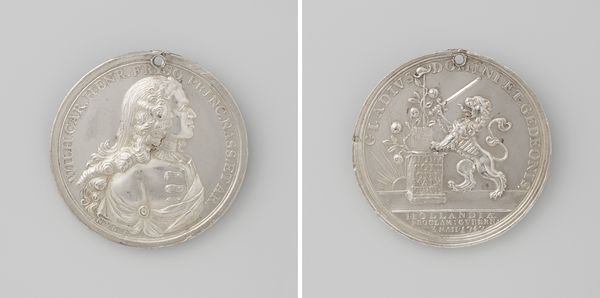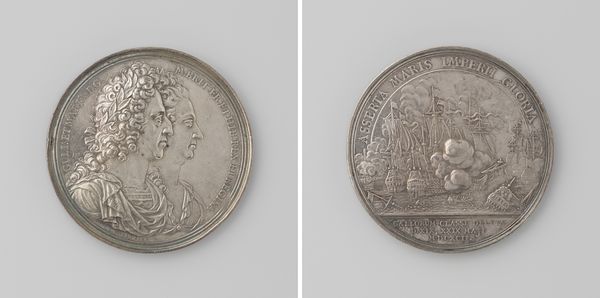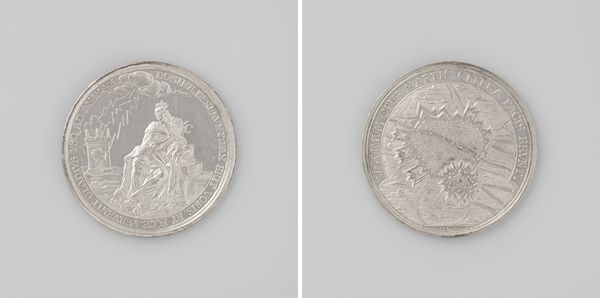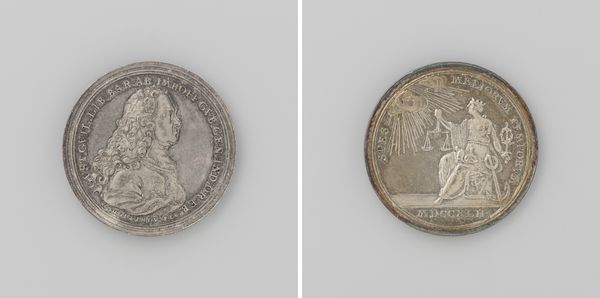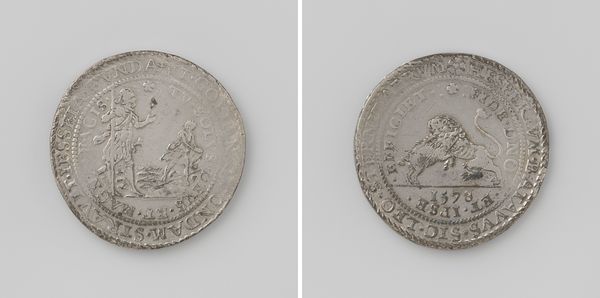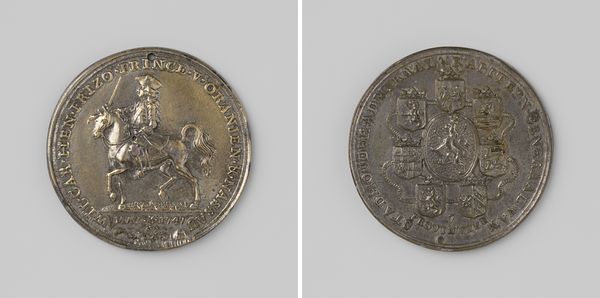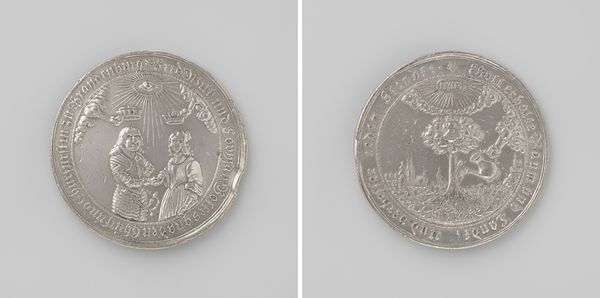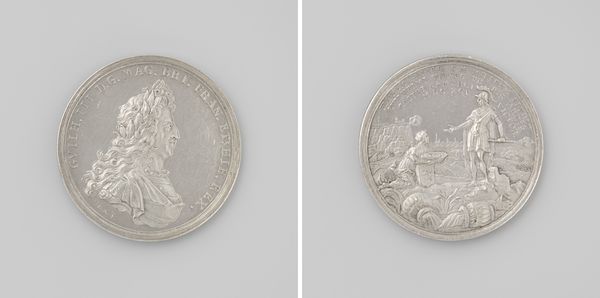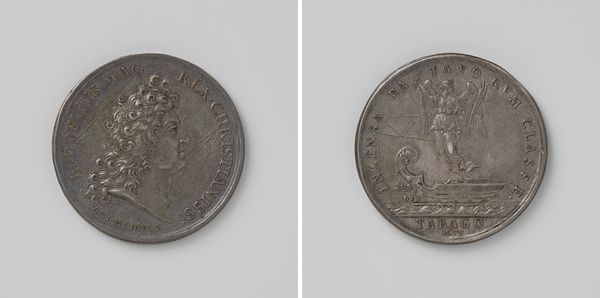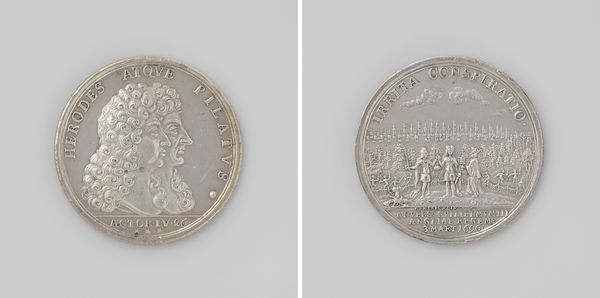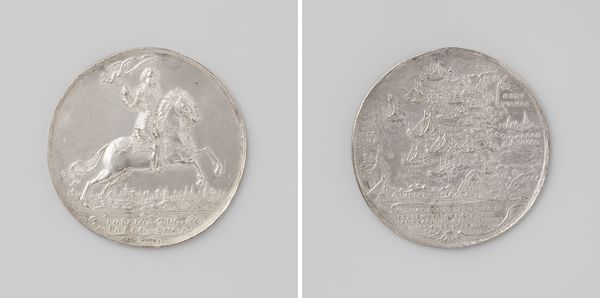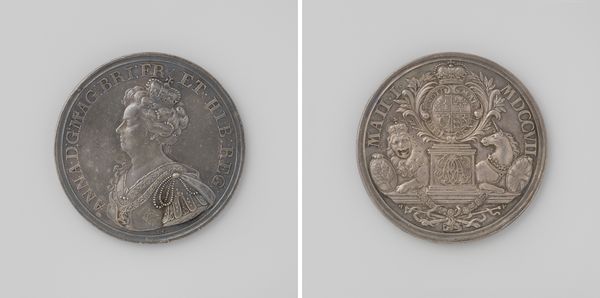
metal, relief, sculpture, engraving
#
portrait
#
baroque
#
metal
#
relief
#
sculpture
#
history-painting
#
engraving
Dimensions: diameter 5.6 cm, weight 67.90 gr
Copyright: Rijks Museum: Open Domain
Editor: We're looking at a metal relief sculpture entitled "Ontzet van Wenen door Leopold I," which translates to "Relief of Vienna by Leopold I" from 1683 by Anton Meybusch. It’s interesting how two distinct scenes can exist on such a small coin. What compositional choices strike you in this piece? Curator: Notice how Meybusch employs circular form, containing both the regal portrait of Leopold I and a dynamic battle scene within this singular, enclosed space. The portrait, meticulously detailed, contrasts starkly with the densely packed, almost chaotic representation of the battle. This deliberate contrast underscores the individual power versus the collective action of war. Do you observe anything interesting about the lines used? Editor: Yes, the lines in Leopold’s portrait are very smooth, especially when compared to the lines in the battle scene where there is so much angular energy. I noticed there’s also text around the border of each side, how do you see this framing adding to the overall composition? Curator: Precisely. The inscriptions serve not merely as labels, but as integral visual elements. Their circular arrangement echoes the form of the medal itself, further binding the portrait and battle scene into a cohesive unit. Consider how this circular text directs the viewer’s eye, compelling them to engage with every element of the composition in a structured manner. It functions almost like a frame within a frame, intensifying our focus on the depicted imagery. What feelings do you have while observing this medal? Editor: I am intrigued how the contrast in styles used forces your eye between each scene but it does feel very unified. I didn’t even consider the text as a formal element but now realize how vital it is for compositional integrity. Thanks for your input! Curator: It is in studying the composition of historical work such as this where the essence of semiotics and structure become apparent.
Comments
No comments
Be the first to comment and join the conversation on the ultimate creative platform.
